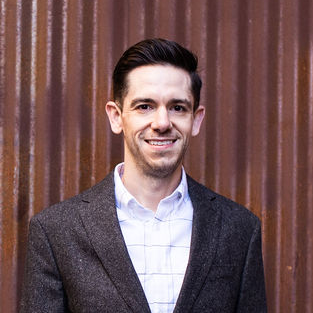Principles Belong in Your Decision-Making Toolkit

Every year, over 400 Stanford students vie for 120 slots in the course Principled Entrepreneurial Decisions (ENGR 148/248), developed and co-taught by Stanford Lecturer Jack Fuchs and Scott Sandell. The students debate cases where entrepreneurial leaders faced significant inflection points in their companies, and the case protagonists discuss the business rationale for their decisions and the role their principles played. By the end of the quarter, the students develop their own principles to brave ethical complexity and to face tough situations they will encounter in their lives and careers.
That course inspired a recent article in Harvard Business Review, “It’s Time to Define Your Company’s Principles,” by Fuchs, Sandell, and course assistant Vikram Shanker. eCorner spoke with Fuchs about how he developed his framework for teaching and developing principles, why principles should come into conflict, and how anyone can create and use their own principles to make more effective decisions and improve their lives.
“Think of a principle as a thoughtful comment someone makes during a deep discussion at a meeting that really sways the conversation to a particular outcome.”
– Jack Fuchs
Most people are familiar with corporate values. How are principles different, and why are they important?
JACK FUCHS: Values give you a general sense of what’s good or bad. Principles are longer and more distinctive, making them more helpful in guiding company decisions.
Think of a principle as a thoughtful comment someone makes during a deep discussion at a meeting that really sways the conversation to a particular outcome. For example, a customer-related principle I like is, “When we set an expectation with a customer, we own it.” This principle is valuable in deciding whether to release a product and when, or whether to issue a refund or replace a product. You could imagine arguing about and discussing principles such as this one among yourselves as a team. Compare that with a typical value: “We are customer-centric.” While the value provides a point of emphasis, it doesn’t necessarily help when you face a difficult decision.
How does having principles improve decision making in a company?
JF: By instilling well-known principles throughout the company, your team will have principled-based discussions, rather than merely arguing alternative paths. This means that within the context of a decision, you are weighing which principles are more important than others in that situation. When you clearly communicate and instill those principles across the organization, employees will make better decisions.
Principles help a company as it scales. They help with the 99 percent of decisions that happen when leadership isn’t around. Having strict rules for every decision can be overly restrictive and challenging, but having a set of principles provides a guidepost. It’s not as straightforward as following a rule, but it allows for greater efficiency, because you can’t make rules for every situation. I recently read No-Rules Rules by Reed Hastings. One of his mantras is, “Lead with context, not control.” I think that phrase sums up principles well.
How did you first get interested in principles?
JF: In my early days working with companies, I often emphasized guiding principles. When groups faced a difficult decision, I would help them understand the guiding principles of what they were trying to do, then lead them through a process to arrive at a decision. When we got to contentious parts of a discussion, I would steer the team back to those guiding principles, which often held the directional arrow that led to the decision.
For 15 years, I also taught a typical entrepreneurship course focused on forming and starting companies. I always wanted to teach a course on what happens next – when you’re actually running a company – but I lacked a suitable framework. This changed when I had the chance to work with Ray Dalio on a board of directors. I was struck by his book Principles and how he used principles at his firm, Bridgewater. This gave me the framework for helping students figure out how to run a company – not just theoretically, nor as I personally would do it, but tailored to their specific needs.
As you started building this framework, was there anything that surprised you or changed your thinking?
JF: While “surprise” might be a strong term, I constantly learn from the companies and students I work with on developing principles. I gain new insights whenever we discuss a case or hear a student team discuss their principles. The notion that principles should come into conflict, and that wrestling with the conflicting principles helps you make better decisions, came from a student the first year I taught the course.
Another unexpected discovery is that it’s never a bad time to start instilling principles in a company. Most of the time, they already exist, and it’s a matter of codifying, communicating, and instilling them more effectively. I urge founders to develop founder principles early on, engaging in discussions about what kind of company they want to build, their work style, and their decision-making approach. And for a more established company wondering if they’re too late, the answer is clear – wherever you are, you’ve accumulated enough knowledge to identify principles that make sense for your organization. Whenever you decide to undertake this, the benefits are substantial and contribute to smoother operations across the board, better indoctrination of new team members, and more thoughtful approaches to crucible moments.
What do you mean when you say principles should come into conflict?
JF: As you are faced with a company or personal decision, consider multiple conflicting principles that are involved in that decision. You should wrestle with those principles and decide which one is more important within the context of that decision. Through wrestling with those principles, you will make better decisions.
For example, one of my students had a principle about their willingness to sacrifice fun and enjoyment to secure a better future. They had another about prioritizing friends and family over work. It’s totally reasonable to have these two principles. When met with a decision, in some situations, the “family and friends” principle will win out; in others, the “set myself up for the future” principle will win out. Over time, through wrestling with principles, individuals become more adept at navigating and balancing conflicting principles, honing their decision-making skills.
What about when someone’s personal principles conflict with a principle at their company or something they’re asked to do at work?
JF: Your personal principles may not align precisely with your company’s principles. Even if you founded the company, running your family differs from running a business. However, there should be congruence and reasonable similarity in essential aspects – they won’t be identical, but they should rhyme.
People have varying levels of discomfort with different principles. For instance, I struggle in a heavily promotional environment, but others might be comfortable with their leader being a big promoter. Recognizing which principles are less compatible or don’t work well for you is crucial. Helping students articulate their own set of values and principles enables them to identify mismatches when considering joining an organization. This self-awareness contributes to a better understanding of when and why something doesn’t feel right.
You try to stay agnostic about what a person’s or company’s principles should be. Why is that important?
JF: If I impose my values and principles on someone, they are unlikely to use them constructively. It’s much more effective to guide them in creating a set of principles tailored to their situation and who they are.
Through my experiences with numerous companies and hundreds of students, both in the United States and globally, I’ve observed the diverse ways people implement their principles. While the overarching approach tends to be similar, the specific principles and how they are implemented vary significantly across different people and situations. This diversity is not only acceptable but is precisely what the teaching team hopes for.
The HBR article has pointers for teams to develop principles. What advice do you have for individuals who want to do this?
JF: Begin by gaining a clear understanding of your values. These serve as a foundational guide for developing principles that align with your core beliefs and priorities.
Then, recall challenging decisions you’ve faced – situations when there wasn’t a clear right or wrong answer. Analyze the principles that played a role in those decisions. For personal principles, consider choices like selecting a college, pursuing graduate school, accepting or rejecting a job offer, ending a relationship, or moving to a different city. If you had articulated principles beforehand, what would they have been? Identify principles that were important but didn’t prevail in those specific situations. This process helps you build a comprehensive and sometimes conflicting set of principles, providing insight into why decisions vary.
Finally, understand that being principles-led doesn’t mean you violate your principles when making unexpected or different decisions in the future. It’s not the same situation, and you’re not the same person. Rather, you are prioritizing a different principle over another at that time. This desirable tension between principles is why we suggest avoiding words such as “always’ and “never” in principles. In addition, this awareness leads to a more harmonious relationship with yourself.
How would you like to see your work used? What impact would you like to see it have on companies and people?
I would like to see people develop principles and live according to them. This commitment fosters more introspective, thoughtful, and ultimately fulfilled lives. Regardless of one’s position in an organization, I would like everyone to have the potential to have a positive impact, whether that means changing the world on a grand scale, or just improving their own small corner of the world.


